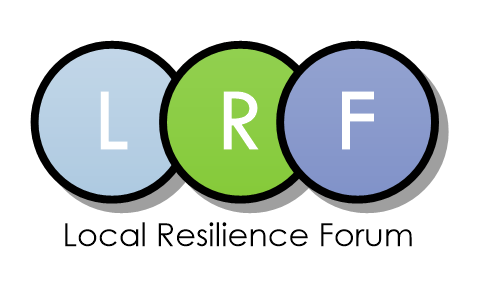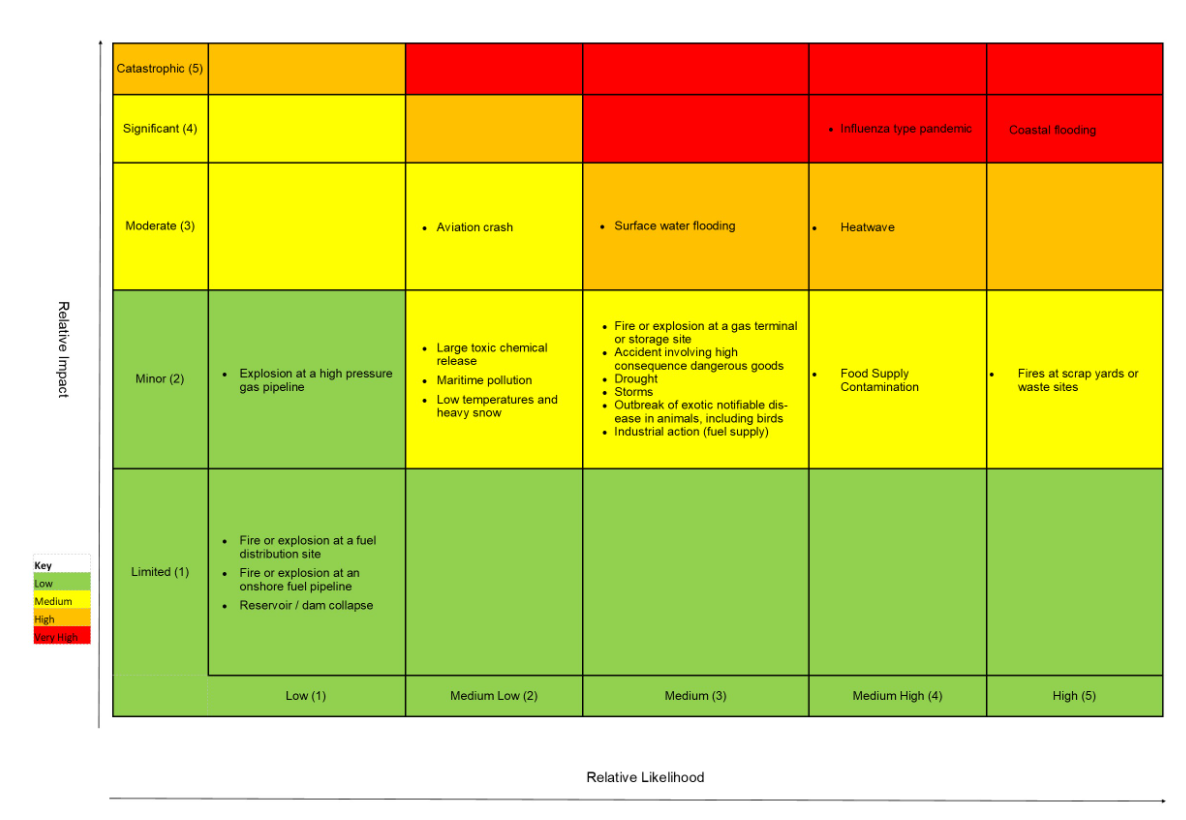Local Resilience

Introduction
What are the big risks facing you, your family and friends as a result of living where you do and what is being done to understand those risks, minimise the risks and respond should they materialise?
In Devon, Cornwall and the Isle of Scilly the key concerns in 2018 were:
- Failure of the Electricity Network;
- Flooding;
- Industrial accidents and environmental pollution;
- Influenza type disease;
- Major Air Quality Incident;
- Major Pollution of COntrolled Waters;
- Malicious threats;
- Prolonged low temperature, heavy snow and/or ice
- Volcanic Eruption (Gas rich and ash)
Source DCIS LRF, Community Risk Register, 2018 edition
These were determined by the local resilience forum based on the National Risk Register and their knowledge of the area.
For each of these risks the local Category 1 responders and Category 2 responders have considered where and when they may occur, who may be affected,
what will need to be done to help the public and how the public can help themselves. They also give prior information to the public to help them prepare themselves. See for example
this web page from Gloucestershire LRF

The possible consequences of risk events include:
- Death;
- Injury;
- Ill health;
- Loss of or damage to property;
- Financial loss;
- Loss of livelihood or earning potential;
- Inconvenience / loss of time;
- Damage to environment;
- Emotional distress.
The issue with emergency planning and resilience is deciding what resources to commit now in order to prepare for possible future events, which possible future events to concentrate on and how to balance the effort between preventing the different types of outcome. One thing we do know from experience is that if something does happen and the response is seen to be lacking then the media and social media will kick up storm and claim you are incompetent. There is now relatively new legislation (The Civil Contingencies Act) and a lot of government advice and expectation about the ability of areas to cope with challenges.
You should be able to find the information on the perceived risks for your area from your local LRF pages.
Local resilience forums are "multi-agency partnerships" made up of representatives from local public services, including the emergency services, local authorities, the NHS, the Environment Agency and others. These agencies are known as Category 1 Responders. The LRF role is to ensure that they have considered the risks in their area and have considered how to reduce those risks (reducing the probability of an incident and the reducing the potential consequences of any proposed incident) and agreed and practiced the response to an incident to protect the public, environment and economy.
Their role is defined in a Cabinet Office paper . A list of LRFs, their contact details and links to more information about their function can be found on the internet.
The purpose of the LRF process is to ensure effective delivery of duties under the Civil Contingencies Act that need to be developed in a multi-agency environment and individually as a Category 1 responder. In particular the LRF process should deliver:
- the compilation of agreed risk profiles for the area, through a Community Risk Register;
- a systematic, planned and co-ordinated approach to encourage Category 1 responders, according to their functions, to address all aspects of policy in relation to:
- risk;
- planning for emergencies;
- planning for business continuity management;
- publishing information about risk assessments and plans;
- arrangements to warn and inform the public; and
- other aspects of civil protection duty, including the promotion of business continuity management by local authorities; and
- support for the preparation by all or some of its members of multi-agency plans and other documents, including protocols and agreements and the co-ordination of multiagency exercises and other training events.’
LRFs are required to produce a community risk register which discusses the risks relevant to their area. The purpose of the community risk register is "to inform people about the risks that could occur where they live, so they can think about what they can do to be better prepared in their homes, communities and businesses. Looking at all of the risks together can also help emergency services, local authorities and other organisations plan their joint response".
Identified risks are assessed for the likelihood and the impact:
- Likelihood is the probability of an incident happening, related to the hazard, over a given period (1 or 5 years are commonly used)
- Impact is a measure of the severity of the potential harm caused by the hazard, looking at health, economic, environmental and societal (Community) impacts.

This matrix from Norfolk Resilience Formum - Know your risks
It is where the consequences and probability are both high that the forum focuses its attention (Shown in red or orange on this plot).
Note: See also the UK Resilience Forum (UKRF)